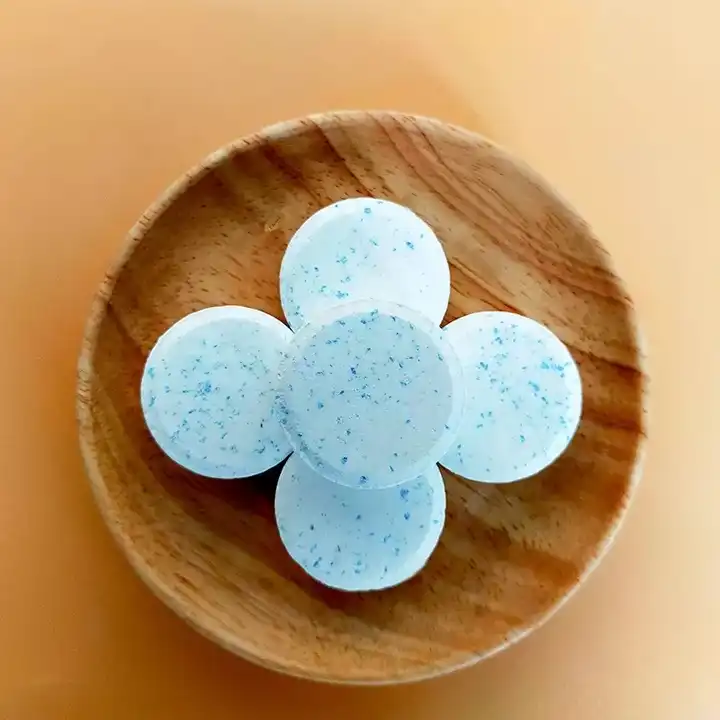Disinfection and coagulation are two critical steps in maintaining swimming pool water quality. One common method of disinfecting swimming pools is the use of chlorine tablets, while coagulants are employed to remove turbid materials from the water. However, many people may wonder whether disinfecting chlorine tablets can be combined with flocculants to achieve better water quality. This article will delve into this issue, analyze whether the two can work together, and provide some practical suggestions for swimming pool management.

I. Basic Principles of Swimming Pool Disinfection with Chlorine Tablets and Coagulants
Disinfection Effect of Chlorine Tablets
In a chlorine tablet, a chloride compound such as calcium chloride or tricyanochloride is typically included. When dissolved in water, it releases free chlorine, highly oxidizing in nature. Free chlorine interacts with microorganisms in the water, damaging their cell membrane structure, thereby inhibiting bacteria and viruses. The use of chlorine tablets maintains chlorine residues in the water, ensuring long-term and effective killing of microorganisms.
Basic Principles of Coagulants
Swimming pool coagulant, also called swimming pool clarifier, is essential for keeping pool water clear. Traditional swimming pool coagulants include alum, polyaluminum chloride, etc. These flocculants mainly remove turbid substances in the water through flocculation and sedimentation. In recent years, a new form of coagulation—liquid cationic clarifier has emerged.
Traditional coagulants have strong flocculation and settling properties. Alum and polyaluminum chloride can form fine flocs in the water, fixing and precipitating turbid matter, improving water transparency. However, it may take some time to ensure their effectiveness is fully realized.
Liquid cationic clarifiers represent an advanced method of water quality treatment, quickly improving water clarity by adsorbing tiny particles, forming larger particles that settle. Compared with traditional coagulants, liquid cationic clarifiers act more quickly and flexibly.
When using these coagulants, pay attention to the distance between them and chlorine-containing disinfectant tablets. The use of traditional coagulant and chlorine-containing disinfectant tablets is relatively independent. However, when using a liquid cationic clarifier, carefully control the time of adding it and chlorine-containing disinfectant tablets to avoid possible chemical reactions caused by excessive dosing, ensuring synergistic effects of water quality treatment.
Ⅱ、Things to Note When Using Chlorine Tablets and Polyaluminum Chloride Precipitant
- Time Interval Between Administration of Disinfectant Chlorine Tablets:
- Cannot be used simultaneously with disinfectant chlorine tablets. The recommended time interval between the two is about 1 hour, with no need for prioritization.
- Selection of Active Ingredient Content:
- To achieve better results, polyaluminum chloride with an active substance content of more than 30% should be used.
- Conditions of Use:
- Ensure the relative stability of the water during the use of precipitating agents to prevent the dispersion of the agent. The temperature should not be too high, and it is usually recommended not to use it at night or when it rains.
- Influence of pH Value:
- The pH value of water quality has a certain impact on the effectiveness of the precipitant. It is best to check the pH value of the water before putting it in, maintaining it between 7.5-7.8.
- Selection of Delivery Time:
- Before the sun rises at dawn, use a manual suction machine to suck away the sediment to fully purify the water body.
Ⅲ、Things to Note When Using Chlorine Tablets and Cationic Clarifying Agents
- Ingredient Characteristics:
- Cationic clarifier is a safe and environmentally friendly liquid clarifier that does not contain alum, making it more user-friendly during use.
- Combination with Chlorine-Containing Disinfectants:
- Generally, using it with chlorine-containing tablets is not recommended, but there is no hard and fast time interval. This prevents potential chemical effects.
- Solubility Characteristics of Clarifier:
- This product has extremely high solubility in water, does not affect the use of other additives, and is easy and safe to use.
- Clarification Effect:
- Cationic clarifier has a good clarifying effect on turbid water quality, quickly aggregating tiny particles and improving water quality transparency.
- Influence of pH Value:
- It does not affect the pH value of water quality, meaning that the clarifier will not cause pH fluctuations in water quality during use, maintaining the stability of the water body.
- Use with Circulating Sand Cylinder:
- It must be used in conjunction with the circulating sand tank. Without the sand tank, the clarifier will not be able to exert the expected clarification effect. The presence of the circulating sand tank helps to better filter and remove the agglomerated particles.
Ⅳ、Things to Note When Using Alum and Chlorine Tablets
Alum should not be used simultaneously with disinfectant chlorine tablets. It is recommended to use alternate feeding. This prevents the two substances from chemically interacting, thereby ensuring their respective effects.
In conclusion, using chlorine disinfectant tablets in swimming pools with coagulants does have certain benefits, but it must be done with caution. In practice, the dosage and frequency should be flexibly adjusted based on the water quality conditions of the pool, disinfection requirements, coagulation effect, and other factors. To ensure the clarity and safety of swimming pool water quality, scientific and reasonable management and maintenance methods must be adopted. With proper combination and application, we can create a pleasant and healthy swimming pool atmosphere, allowing swimmers to swim in clear waters.

 Instant
Quote
Instant
Quote Email
Us
Email
Us